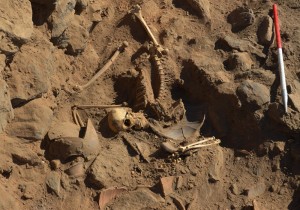 A team of an Italian Archaeological Mission, have uncovered the remains of an epidemic in Egypt. While working at the Funerary Complex of Harwa and Akhimenru in the ancient city of Thebes (modern-day Luxor) in Egypt, the team found bodies covered with a thick layer of lime, which was historically used as a disinfectant. The researchers also found three kilns where the lime was produced, as well as a giant bonfire containing human remains, where many of the plague victims were incinerated.
A team of an Italian Archaeological Mission, have uncovered the remains of an epidemic in Egypt. While working at the Funerary Complex of Harwa and Akhimenru in the ancient city of Thebes (modern-day Luxor) in Egypt, the team found bodies covered with a thick layer of lime, which was historically used as a disinfectant. The researchers also found three kilns where the lime was produced, as well as a giant bonfire containing human remains, where many of the plague victims were incinerated.
The funerary complex of Harwa and Akhimenru, located on the west bank of the ancient city of Thebes is one of the largest private burial monuments in Egypt. Built in the seventh century B.C. for a grand steward named Harwa, it was used continuously for burial after his death. And now, the team of Italian archaeologists have reported discovering the cremated remains of a number of victims of the “Plague of Cyprian” at a funerary complex.
It has been reported according to LiveScience that Cyprian left a gut-wrenching record of what the victims suffered before they died. “The bowels, relaxed into a constant flux, discharge the bodily strength [and] a fire originated in the marrow ferments into wounds of the fauces (an area of the mouth),” he wrote. Modern-day scientists have speculated that the disease may have been a virulent case of smallpox or measles. The plague killed two emperors — Hostilian and Claudius II Gothicus —and weakened the Roman Empire.















